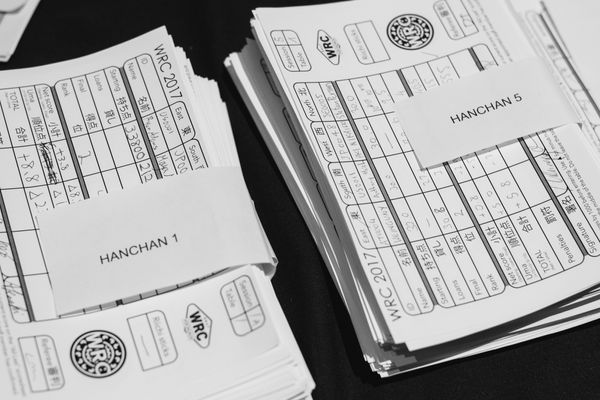Identifying Dangerous Suji

Suji are a popular defense strategy; so popular, in fact, that suji traps are an effective anti-defense. We would like to increase the yomi level and create an anti-anti-defense by identifying when suji traps are likely. Are there situations in which suji are more dangerous? Are they really traps, or are they just incidental discards?
Prominent authors actually disagree on this. Some claim that suji discarded after riichi are more dangerous, while others claim that suji discarded before riichi are more dangerous. The general agreement is that the tile discarded immediately upon declaring riichi is dangerous.
Who’s right? Do you think there’s a difference? Using the Tenhou game logs database, we can examine riichi hands and their discards to finally answer this question.
As usual, the data in this post comes from 4-player games played on Tenhou’s houou table. Over 900000 riichi hands are examined, making this my largest dataset so far!
Let’s start with a recap of how Suji strategy works. Suji are the tiles that complete ryanmen (two-sided) waits. So if you have 3 and 4 in hand, then the waits are 2 and 5. Now let’s say you are defending against someone’s riichi and they discard a 5. At that point, 5 is safe to discard, and if you think they have a ryanmen wait, the suji 2 is now also safe. That’s because they can’t have 34 and be waiting on 25, or else they would be furiten. They also can’t have 67 waiting on 58, so both 2 and 8 are safe.
The first mistake you would see here is people automatically assuming every wait is ryanmen and then discarding suji all the time. So if you have something like 135, you can discard the 5, and people will try to defend and discard the 2 you are waiting for. It’s a trap!
Or, you can just try to make the most efficient hand possible, and once in a while, you’ll wind up with a non-ryanmen wait on an outside tile (1, 2, 3, 7, 8, or 9). After you riichi, maybe you’ll draw and then discard the middle 4, 5, or 6 and unintentionally create a suji trap.
Let’s take a look at some numbers and find out just how likely these strategies are. First, let’s look at how often different wait types are used, out of all riichi hands.
| Wait type | Frequency |
| At least one number tile wait | 86.44% |
| No number tile waits | 13.56% |
| Ryanmen wait | 53.76% |
| Non-ryanmen wait on outside tile | 25.55% |
So if a suji trap is possible 1 time in 4, how often does it actually happen? Let’s look at how often they occur out of all hands, and how often they occur among hands which actually have an outside tile wait.
| Frequency: All hands | Frequency: Suji possible | |
| Any suji discarded | 8.42% | 32.97% |
| Suji discarded before riichi | 3.16% | 12.35% |
| Suji discarded on riichi | 2.26% | 8.84% |
| Suji discarded after riichi | 3.69% | 14.43% |
This doesn’t really answer the question of whether suji are more dangerous before or after riichi. Maybe there are some other factors we can look at to find a difference. For example, we can look at how many middle tiles are actually discarded before and after riichi.
| Average number of middle discards | Std Dev | |
| Before riichi | 0.832 | 0.969 |
| After riichi | 1.042 | 1.263 |
| Share of middle discards | Share of suji discards | |
| Before riichi | 37.60% | 37.47% |
| On riichi | 15.32% | 26.81% |
| After riichi | 47.08% | 43.77% |
First, if a suji trap is to occur at all, it is more likely to happen after riichi, because of the higher number of middle tiles that are discarded after riichi.
Second, an individual middle tile discard is more likely to be dangerous if it is discarded before or on riichi.
Confused? After riichi, there is a high number of low-danger discards. Before riichi, there is a low number of high-danger discards.
I’m not sure how satisfactory this result is. I was hoping we could prove one of the theories right or wrong beyond any doubt. It looks like we have instead found that the difference in theories is due to the different methods in evaluating danger. While I’m looking at all this data, I would like to try getting more situational factors to see if there is a difference. I will probably write a Part 2 looking at nakasuji, the influence of dora, and any differences in the number tile being waited on.



